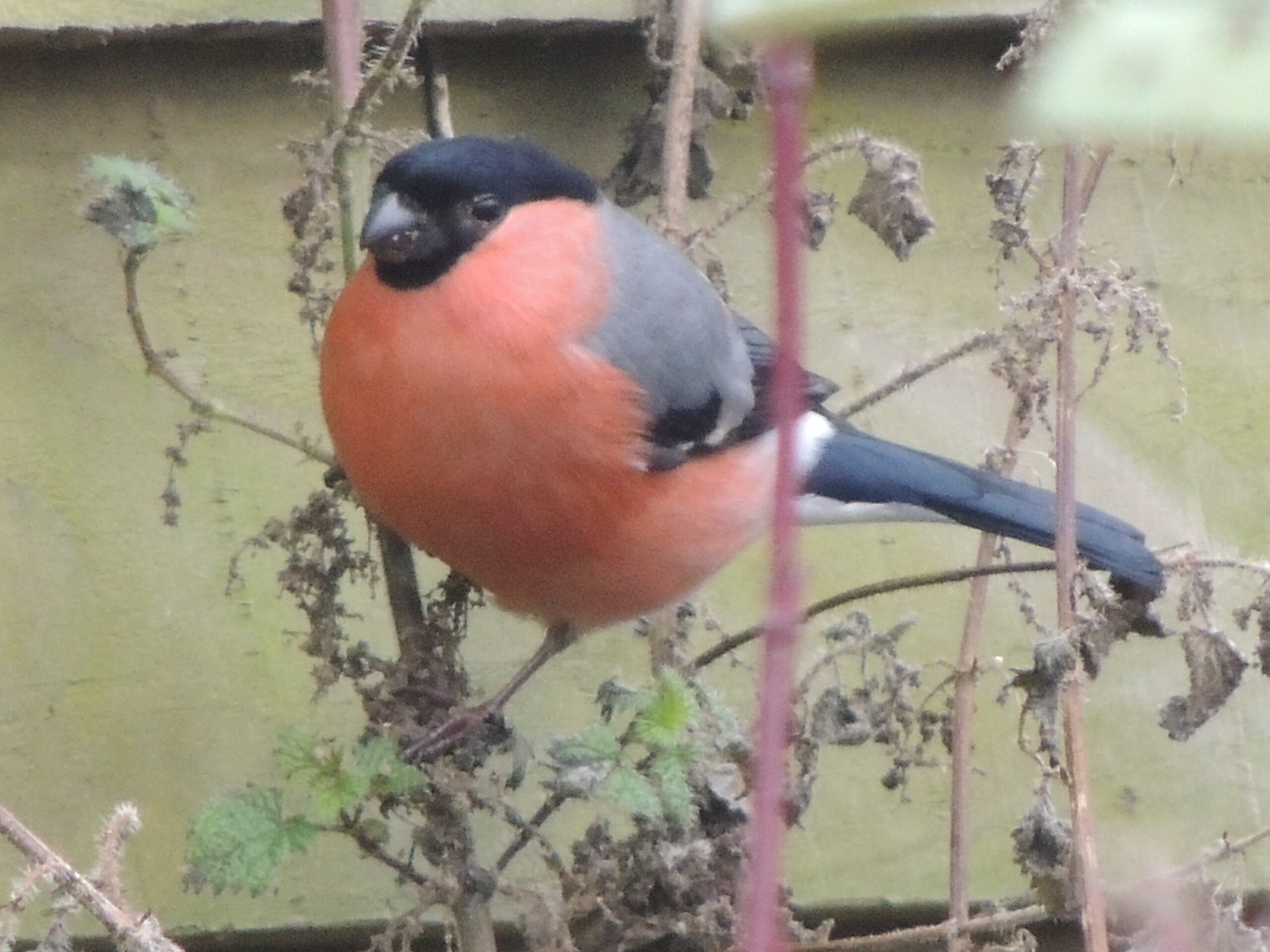Hugh’s views: Stinging Nettles: A Plant For All Seasons
At the moment, at the end of a cold February, stinging nettles are once again becoming visible above ground. Colonisers of disturbed margins and corners and generally unloved by gardeners, they can offer so much to wildlife although tough rampaging underground stems can soon lead to the development of a difficult-to-remove clump.

Bullfinch
Last year I allowed this to happen in our own garden with surprising results. In a small corner plot with boundary fencing on two sides with the side of a garden shed on another and then blocked off at its open end by a large buddleia, a clump of nettles accepted the opportunity to grow unhindered. The small shaded plot, home to a spindly Amelanchier became almost inaccessible to humans.
So here the nettles thrived in this sunless corner and were left in peace in the optimistic hope that a passing small tortoiseshell or peacock butterfly might lay some eggs on the highest leaves and establish a butterfly nursery.
However, as the summer passed this didn’t happen but the nettles grew ever upwards towards the light and when the buddleia received its first winter pruning to prevent the roots being wind rocked, some of the nettles had grown up to five feet tall. Subsequent storms flattened several stems but the tallest somehow survived by seeking support against the nearby fence and there they remained into the beginning of this year.
One Sunday morning in January as I sat looking out at the garden a luminous flash of pink, white and grey flew past the window and settled on a wayward strand of honeysuckle at the end of the aforementioned shed. Ignoring seed feeders to either side, the male bullfinch then flew straight to the remaining storm weary nettles and for the next few minutes sampled seed clusters from several of the dying stems.
It soon left but returned another three times during the course of the day and surprised us by returning to feed on the nettles on the following three days. I had never expected to see a bullfinch in our suburban garden and I wondered how it had discovered this small secluded spot.
Imagine the feeding and nesting opportunities a much larger area of shrubs with an undergrowth of nettles and brambles, if left undisturbed throughout the year, would offer to even more birds and insects.












